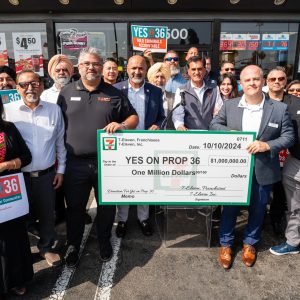How does BART plan to win over the public in support of Measure RR, despite many people’s lack of trust in the agency?
Campaigning for support would actually put us on the wrong side of the law. As a public agency, BART cannot advocate for Measure RR as doing so would be using taxpayer dollars (in the form of company hours, resources, etc.) for the purpose of politics.
However, we are obligated to demonstrate BART’s utility, its value as a service, and how Measure RR is part of the plan to bring our Nixon-era infrastructure into the 21st century. Conversely, we can educate people about what would happen in the event it fails to pass—our goal is to present voters with an informed choice.
Considering roughly 430,00 people move through the system every weekday, the time has arrived for us to address a multitude of age-related issues such as deteriorated power transmission cabling, leaking tunnels, outdated circuitry, misaligned track, eroded rails, and overflowing parking lots. Funds raised from Measure RR would be dedicated to these projects, ensuring both residents and visitors alike have access to safe, reliable transit and the option to trade sitting in traffic for a train ride.
As for trustworthiness, we have the highest possible credit rating for proposition-backed tax debt—proof the global financial industry holds our ability to administrate bonds in high regard. Already, we have capitalized on historically low interest rates, refinancing our previous debt from the 2004 Earthquake Safety Retrofit bond to save taxpayers millions. That builds trust, as does the successful negotiation of labor peace achieved earlier this year through 2021.
For Measure RR in particular, an independent oversight committee would be created upon passage to hold regular, public meetings, with the power to audit any part of the process.
I understand BART has a lot of good ideas for improving infrastructure, both in the tunnels and at the stations. How does BART plan to pay for all this with the money raised by Measure RR?
Our 10-year financial forecast has a total capital needs shortfall of $9.6 billion, of which Measure RR alleviates only a portion. Other sources of funding—like the federal and state governments—will help fill the gap, as will the transfer of funds from our operating budget to capital improvements.
Measure RR’s funds are divided into two major categories: repairing and replacing critical infrastructure ($3.165 billion), and relieving crowding, reducing traffic, and improving access to stations ($335 million).
The former category deals with track renewal ($625 million), power infrastructure renewal ($1.225 billion), tunnel and structure repair ($570 million), mechanical infrastructure repair ($135 million), capacity infrastructure repair / train control renewal ($400 million), and station renewal ($210 million). The latter category deals with station access ($135 million) and future crowding relief projects ($200 million).
The funds will be disbursed every two years in subsets called tranches, with each tranche to be paid off over 30 years. A common misconception is that $3.5 billion would be given to BART all at once—but this wouldn’t make financial sense. Under that scenario, we’d be paying interest on funds we lack the bandwidth to distribute. A disbursement every two years allows us the flexibility to apply money as projects begin and finish.
Why has BART technology remained unchanged since the Pong era? In short, what’s taken so long?
A complicated question, as some of the technology has changed—an example would be customers’ ability to use an NFC-enabled Clipper Card for contactless payment, among many other reinvestments we’ve already made. For example: we completed a $1.6 billion system reinvestment program in the 1990s which renovated 439 cars, various escalators, and fare equipment.
Moreover, BART has spent billions of dollars on improvements over the last few years: the upcoming Fleet of the Future, Hayward Maintenance Complex, and new train control system are three of such projects. In fact, the Fleet of the Future is on the cusp of completion with the first new cars having already arrived.
The items we seek to repair with Measure RR weren’t in need of replacement until just about now. Generally, if it functioned, it didn’t need fixing. Even so, many of the hundreds of thousands of physical parts of BART were not meant (or built) to last much longer than about 45 years—and this year marks our 44th. Now is the time to rebuild.
Also causing holdups are political constraints. Thanks to California law, bond measures require a 2/3 vote for approval—a higher standard than that used to elect our U.S. senators. Under this system, 34% of the population can thwart the will of the majority, which makes crafting these measures a bit like threading a needle. If a bond measure fails to pass in a presidential election year, it may be many years before another can be put to ballot. If Measure RR is voted down, the intervening years would be difficult for us. Population increase and continued aging would be dealing BART a double whammy.
How does BART plan to continue improving infrastructure while pursuing track extensions like the Warm Springs station or BART to San Jose?
Bringing our fleet to 1,081 cars and improving train control will vastly improve capacity, which gives us the necessary room for new service. Also, the funding to bring BART to San Jose is being paid for by the Valley Transit Authority (VTA) and measures passed in Santa Clara County. Once VTA builds the stations and trackway, they hand us the keys and we then operate the property as part of our normal system. Additionally, VTA covers all operating costs in Santa Clara County as well as the cost of impact from new riders on our core system.
Measure RR is designed to improve BART’s core, and our General Manager has made it clear that money from Measure RR will not be spent on projects outside the BART District (e.g. in Santa Clara and San Mateo Counties).





Be First to Comment